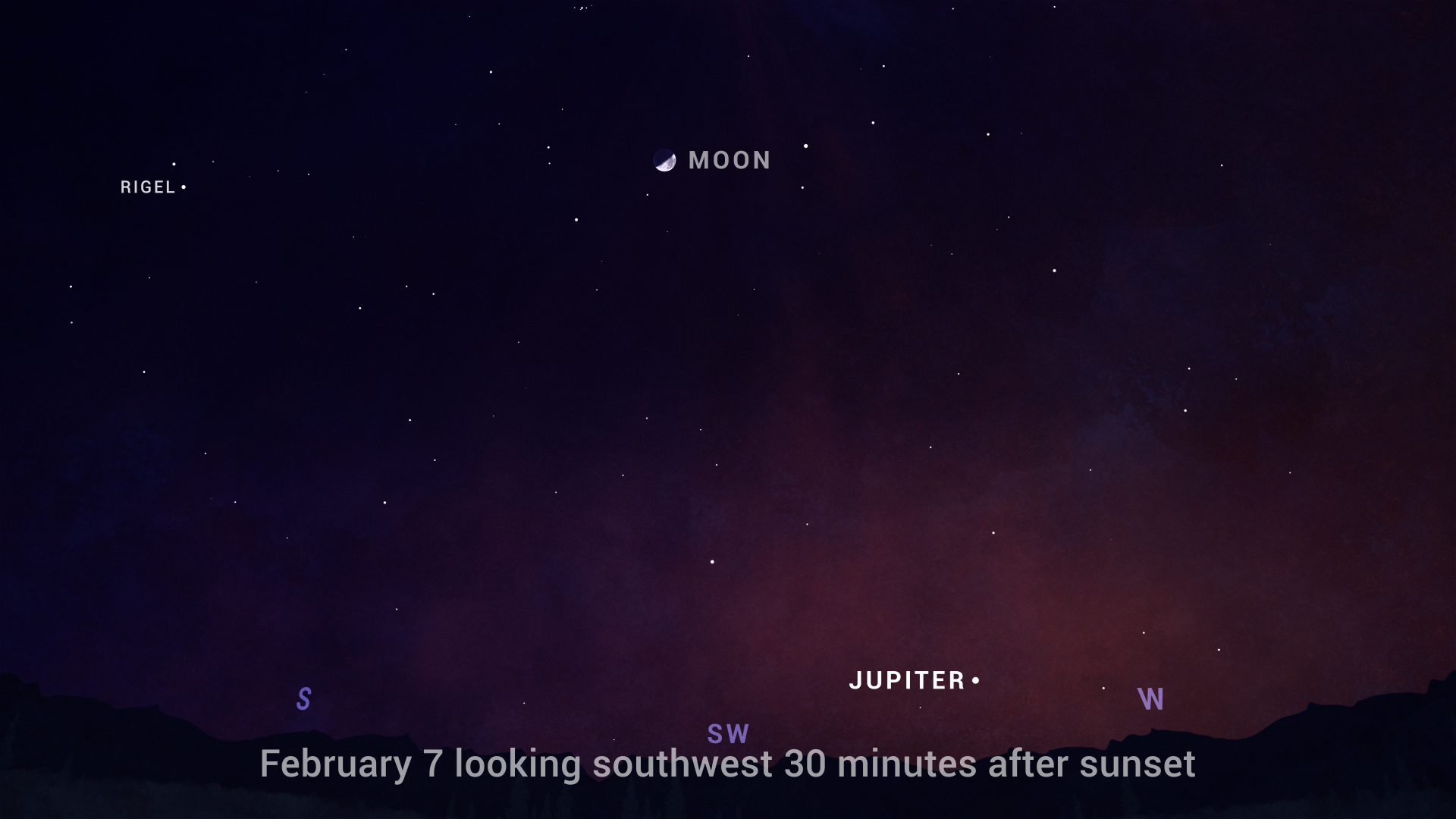Farewell, Jupiter! The gas giant will disappear from the evening sky this month

It will soon be time to bid a fond adieu to an object that has been a fixture in our evening sky since late last summer: the planet Jupiter.
Jupiter is leaving our skies after many months of an impressive display. Currently it's setting just under two hours after the sun and you can still see it quite easily, albeit rather low in the west-southwest sky. It's the brightest "star" in the area.
On Wednesday evening (Feb. 2) — Groundhog Day — we were treated to a lovely celestial tableau, as a very narrow crescent moon, only 43 hours past new phase and a mere 5% illuminated, sat about 4.5 degrees to the lower left of Jupiter (your clenched fist, held at arm's length measures roughly 10 degrees). This week the moon will be much higher in the sky as Jupiter dips below the western horizon after sunset.
Related: The brightest planets in February's night sky
Farewell for now
With each passing evening, Jupiter will drop a little lower into the sunset glow. By Tuesday (Feb. 8), the difference between sunset and Jupiter's setting will diminish to 90 minutes. By Feb. 17, Jupiter will stand only 5 degrees above the western horizon a half-hour after sunset. The big world goes down only about 55 minutes after the sun and is becoming increasingly difficult to see in the bright twilight glow.
In another day or two, Jupiter will be gone. It will be in conjunction with the sun on March 5, transitioning into the morning sky, where it will reappear at dawn early in April.
So, for Jupiter this is not really a "goodbye," but only a "farewell" until later in the spring. As American writer, Richard Bach so aptly put it: "Don't be dismayed at goodbyes. A farewell is necessary before you can meet again."
Breaking space news, the latest updates on rocket launches, skywatching events and more!
Joe Rao serves as an instructor and guest lecturer at New York's Hayden Planetarium. He writes about astronomy for Natural History magazine, the Farmers' Almanac and other publications. Follow us on Twitter @Spacedotcom and on Facebook.

Joe Rao is Space.com's skywatching columnist, as well as a veteran meteorologist and eclipse chaser who also serves as an instructor and guest lecturer at New York's Hayden Planetarium. He writes about astronomy for Natural History magazine, Sky & Telescope and other publications. Joe is an 8-time Emmy-nominated meteorologist who served the Putnam Valley region of New York for over 21 years. You can find him on Twitter and YouTube tracking lunar and solar eclipses, meteor showers and more. To find out Joe's latest project, visit him on Twitter.
